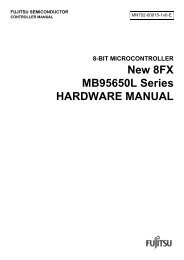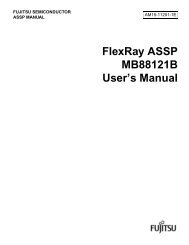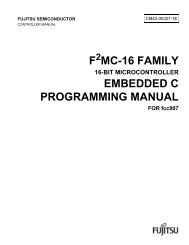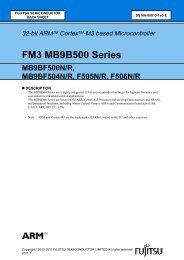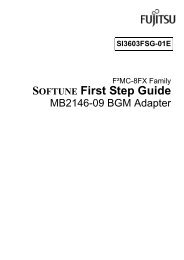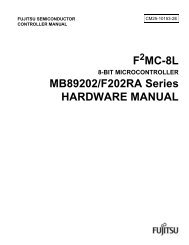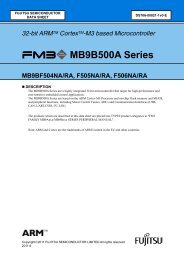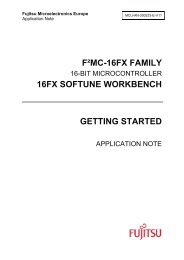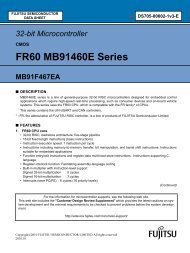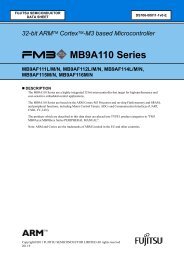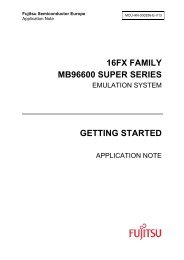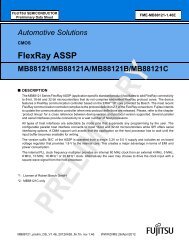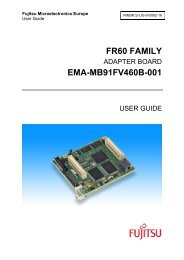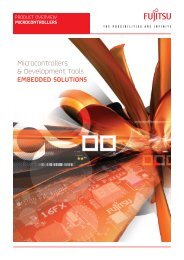J-Link / J-Trace User Guide (UM08001) - Microcontrollers
J-Link / J-Trace User Guide (UM08001) - Microcontrollers
J-Link / J-Trace User Guide (UM08001) - Microcontrollers
Create successful ePaper yourself
Turn your PDF publications into a flip-book with our unique Google optimized e-Paper software.
128 CHAPTER 5 Working with J-<strong>Link</strong> and J-<strong>Trace</strong><br />
5.11.1.8 map ram<br />
This command should be used to define an area in RAM of the target device. The area<br />
must be 256-byte aligned. The data which was located in the defined area will not be<br />
corrupted. Data which resides in the defined RAM area is saved and will be restored if<br />
necessary. This command has to be executed before map indirectread will be<br />
called.<br />
Typical applications<br />
Refer to chapter Fast GPIO bug on page 163 for an example.<br />
Syntax<br />
map ram -<br />
Example<br />
map ram 0x40000000-0x40003fff;<br />
5.11.1.9 map reset<br />
This command restores the default memory mapping, which means all memory<br />
accesses are permitted.<br />
Typical applications<br />
Used with other "map" commands to return to the default values. The map reset<br />
command should be called before any other "map" command is called.<br />
Syntax<br />
map reset<br />
Example<br />
map reset<br />
5.11.1.10 SetAllowSimulation<br />
This command can be used to enable or disable the instruction set simulation. By<br />
default the instruction set simulation is enabled.<br />
Syntax<br />
SetAllowSimulation = 0 | 1<br />
Example<br />
SetAllowSimulation 1 // Enables instruction set simulation<br />
5.11.1.11 SetCheckModeAfterRead<br />
This command is used to enable or disable the verification of the CPSR (current processor<br />
status register) after each read operation. By default this check is enabled.<br />
However this can cause problems with some CPUs (e.g. if invalid CPSR values are<br />
returned). Please note that if this check is turned off (SetCheckModeAfterRead = 0),<br />
the success of read operations cannot be verified anymore and possible data aborts<br />
are not recognized.<br />
Typical applications<br />
This verification of the CPSR can cause problems with some CPUs (e.g. if invalid CPSR<br />
values are returned). Note that if this check is turned off (SetCheckModeAfterRead =<br />
0), the success of read operations cannot be verified anymore and possible data<br />
aborts are not recognized.<br />
J-<strong>Link</strong> / J-<strong>Trace</strong> (<strong>UM08001</strong>) © 2004-2010 SEGGER Microcontroller GmbH & Co. KG



